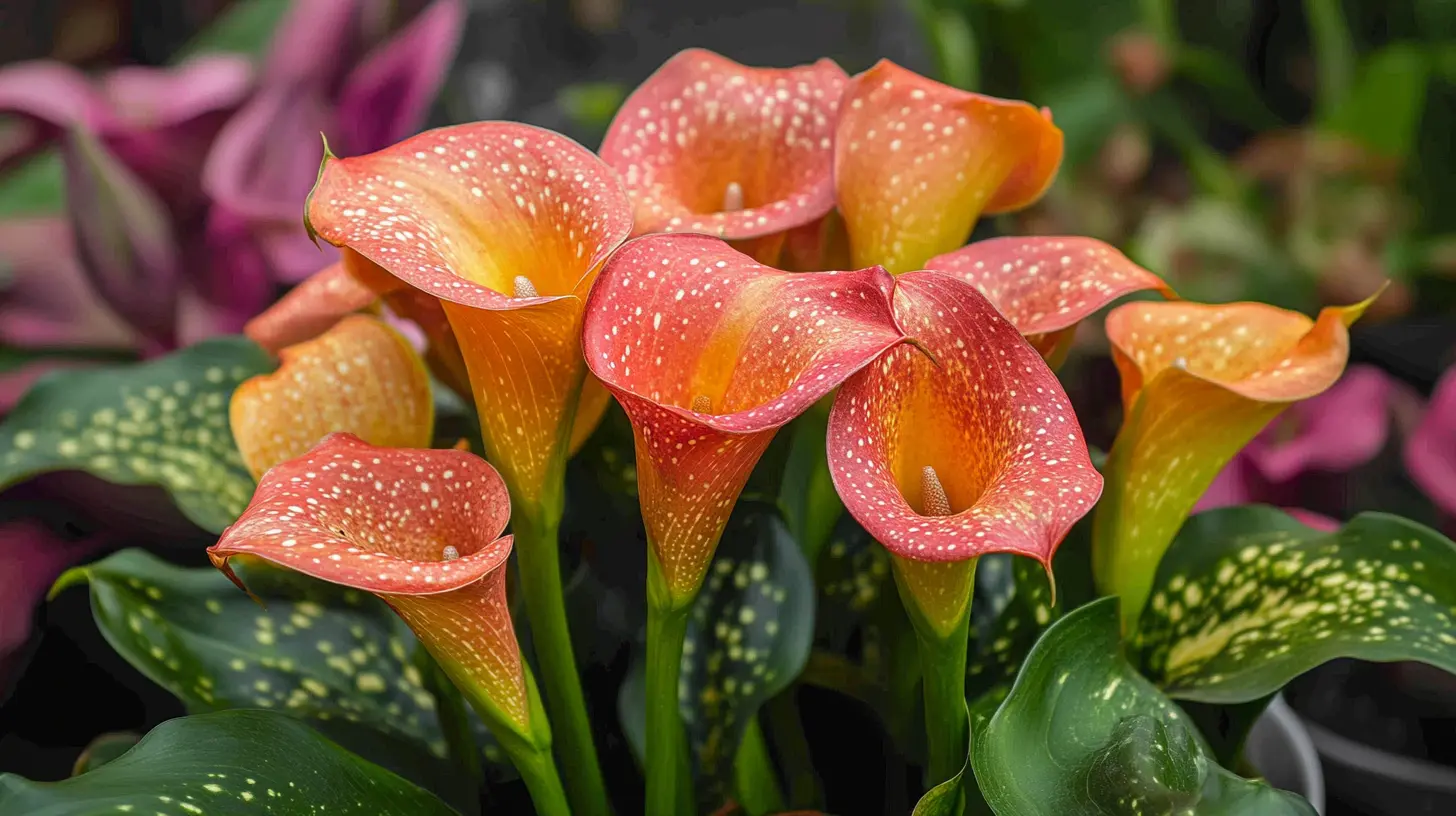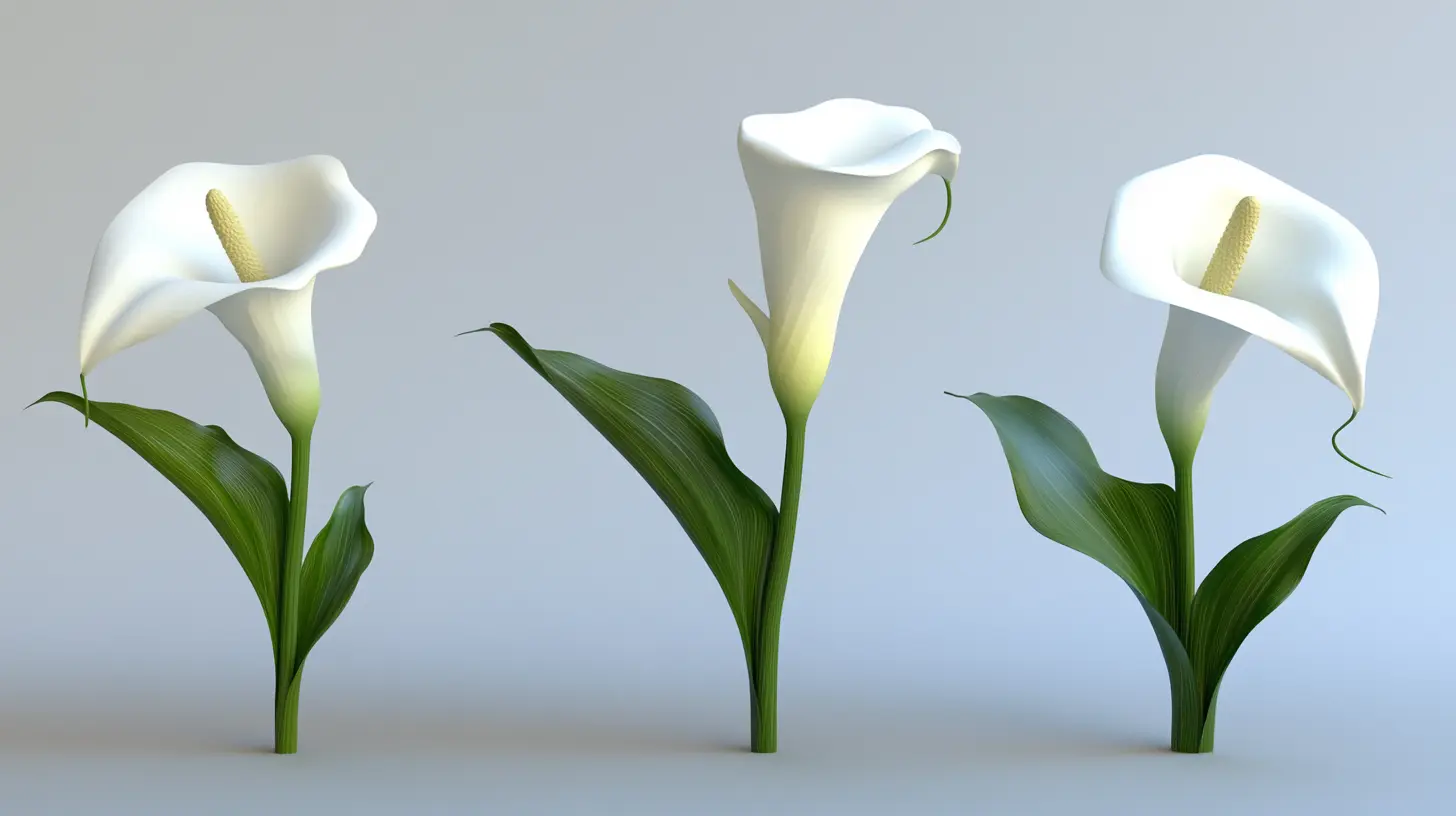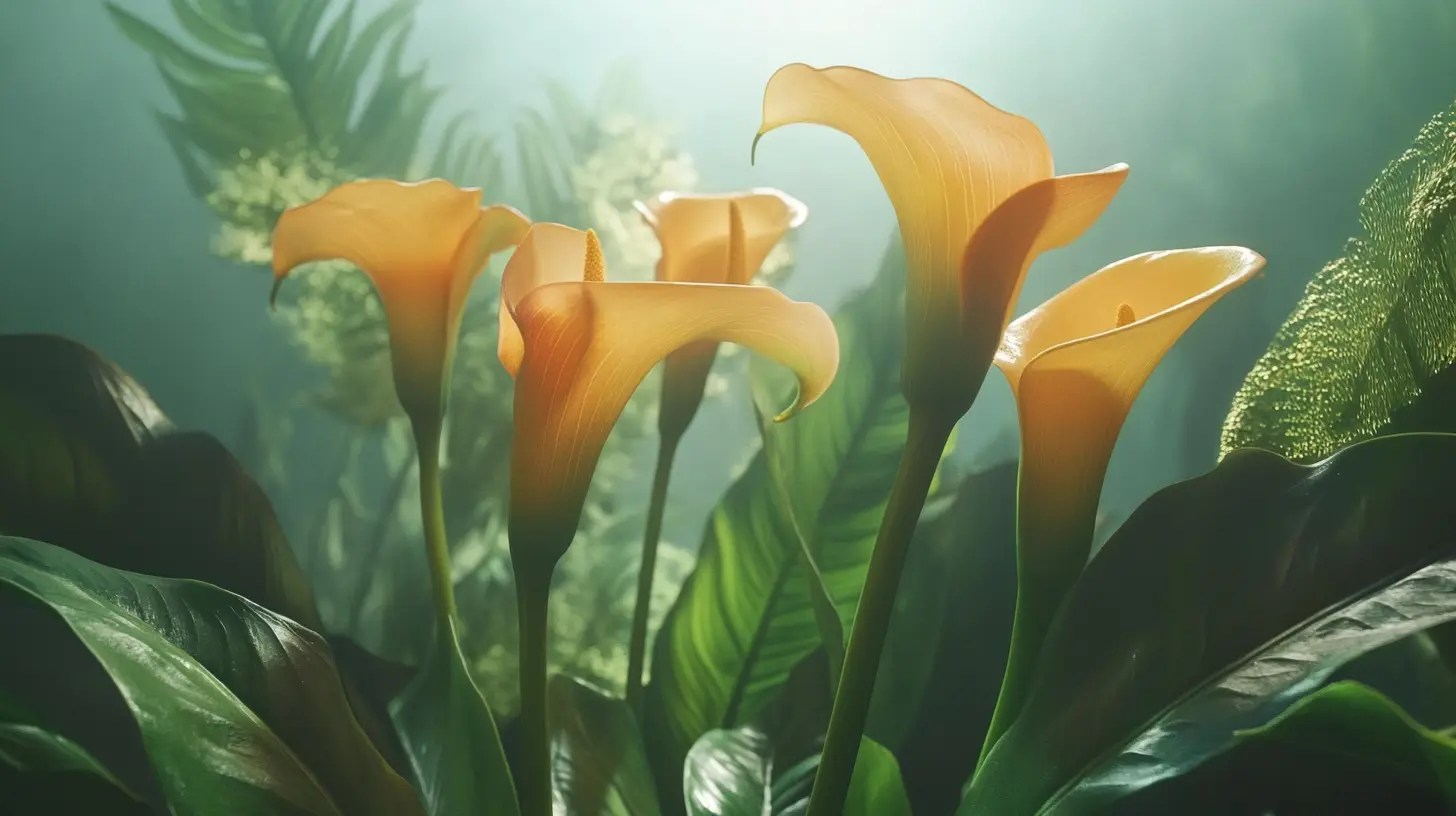Leave Your Message
- Phone
- E-mail
- Whatsapp
- Whatsapp


The global scenario regarding artificial plants, especially the Fake Calla Lily, is said to make way for, coming decades leading up to 2025, an impressive growth as people tend to rely upon eco-friendly decorations more instead of manual crafts, and there's the Online selling as a boon. With research on the market, it indicates that the artificial flower market will prosper immensely with a stellar valuation of USD 2.63 billion by 2025 at a CAGR of 5.2% for the forecast period. Indeed, it reflects the more general trends towards long-life, low-maintenance products for home and event decoration, thereby making them really in-demand both on the end-consumer and the business sides.
At Dongguan Hmflowers Industrial Company Limited, we see a growing trend in the advancement of artificial florals. Through more than twenty years of offering a wide portfolio of artificial plants among which is the prettifying regular Fake Calla Lily, we have also been in a position of strength at our Dongguan factory in expanding production capacity and innovative ability. Our quality commitment in meeting with real-time customer demands for colorful yet realistic artificial flowers makes us a relevant player in the market toward 2025 and beyond.

The growing demand in both residential and commercial sectors is expected to propel a huge market growth for fake calla lilies by 2025. In a recent report by Future Market Insights, the global market for artificial flowers, including fake calla lilies, is projected to grow at a compound annual growth rate (CAGR) of 6.5%. Some factors contributing to this growing market would be the current décor trend of enhancing the home and the shifting consumer preferences towards these types of floral arrangements, which are much more durable and require a lot less maintenance. By 2025, added stimulus to the market is projected to be as a result of newer innovations in the manufacturing processes, making fake calla lilies the most realistic of ever. Reports have mentioned that new developments in product materials, especially high-quality polyethylene and fabrics, produce items that are close to resembling fresh flowers in appearance and texture. Another reason for the growing appeal of fake calla lilies is their versatility: the flowers are increasingly used in weddings, corporate functions, and interior design, thus catering to a wide clientele. According to the regional analysis, North America will have a pretty big share of the market, with increasing consumer spending on home decor and gifting. Some strong growth is expected in the Asia-Pacific region as cultures of countries such as China and India increasingly adopt artificial flowers into traditional as well as contemporary celebrations. In the wake of these market trends, stakeholders should focus on sustainability and explore eco-friendly materials and production processes in response to demand from an increasing number of consumers wanting environmentally conscious goods.

By the year 2025, it is anticipated that the fake Calla Lily market will undergo tremendous growth, supported by several factors. A recent market analysis carried out by Future Market Insights revealed that fake Calla Lilies fall under the growth umbrella of artificial flowers, a global industry that is expected to grow at a CAGR of about 5.2% during the forecast period. Growth would be attributed to an ever-increasing demand for low-maintenance home decor solutions that provide aesthetic charm without worrying about normal upkeep.
Disposable income and changing lifestyles are the major reasons attributed to the demand for fake Calla Lilies. Increasing convenience and elegance are being sought among interior design options, thus making artificial flowers very popular choices. Also, fake flowers have become easy to access due to the booming in e-commerce. Reports reveal a promising 20% growth in online sales of home decor items, such as artificial flowers, over the years, signaling a shift in consumers' buying behavior.
On the other hand, the increasing trend for sustainable living is changing the market dynamics. A lot of consumers consider artificial plants as a sustainable substitute for cut flowers, which usually look beautiful for just a few days. Demand for eco-friendly and reusable decor solutions would grow, such as fake Calla Lilies, with an increase in environmental awareness. Research shows that approximately 35% of consumers are putting sustainability as their buying priority, providing an additional push for the fake flower market. The juncture between convenience, lifestyle changes, and eco-consciousness is bound to be the new fertile ground for fake Calla Lily markets in 2025 and beyond.

The market for fake Calla lily is going to rise significantly across key markets globally by the year 2025. As per a recent report by Future Market Insights, the artificial flower market is likely to grow at a compound annual growth rate (CAGR) of 6.1% from 2020 to 2025. This forecast reveals a tendency among consumers to lesser maintenance home decor. It offers aesthetic appeal to most consumers without continuous care.
Region-wise, North America is the major market for the artificial flowers, wherein the excellent retail atmospherics and high income per head drive the customers. The general demand for decorative items such as indoor and event settings has led to an escalation in the sales of fake Calla Lily products. In 2020, North America accounted for more than 30 percent of the total market share worldwide, representing evidence of a market of preference among consumers.
In contrast, the happening phenomena of the Asia-Pacific region are the fastest-growing artificial flower market, which can be attributed to urbanization and new trends for home decoration by the rising consumption of the emerging class. With an emerging segment of floral retailing, countries like China and India are anticipated to flourish with a rise in artificial flower acceptance. Reportedly, this part of the world can grow at a very impressive CAGR of 8.5 percent and, thus, warrant focused marketing with unique local tastings and cultural elements.
Thus, the analysis carried out at the regional level brings in several dynamics into perspective and emphasizes the increasing scope of the market for fake Calla Lily across the globe while understanding localized demand trends for the right positioning in the market.

The market for imitation Calla lilies is gearing up to experience huge growth by 2025 due to the advanced innovations that promise a perfect quality and realism in producing artificial flowers. The Global Artificial Flower Market report reveals that the market is also set to grow with a projected CAGR of 8.5% between 2020 and 2025, with fake florals factoring highly. Emerging innovations in production methods have focused on improving materials when using high-end polymers and eco-friendly products that resemble the texture and look of natural flowers.
Technological advancements like 3D printing and mold technology have taken an altogether new approach towards creating artificial blooms. These highly detailed, lifelike flowers are gradually becoming a tendency of common mass production among manufacturers. The latest research from Future Market Insights suggest that installation of automated production line has reduced lead times while providing great flexibility to the consumer for customization. Such flexibility would further enhance the divergence of designs and colors available for the consumer.
Sustainability has recently become a primary concern in the current age in the artificial flower world. Many companies have resorted to developments of biodegradable materials and sustainable practices, which should, in the end, minimize the environmental footprint. As revealed by the world's market research, over 60% of consumers today prefer products from renewable resources due to the changing trend of consumers towards eco-friendly alternatives. This scenario is expected to increase the demand for creatively pink Calla lilies, creating a healthy market scenario by 2025.
As we gaze into 2025, the market for floral-type artificial products, especially fake Calla Lilies, is going to blossom significantly. Consumer predilections are leaning toward sustainable and low-maintenance options, thus creating an upsurge in interest for those exquisite artificial flowers that can dull or mimic natural beauty. Today, shoppers want longevity with minimum or no care, and Calla Lily flowers capture attention with their elegant shape and versatile use.
Demand for Fake Calla Lilies is not only driven by aesthetics; it is also related to the personalization trend in home décor. Consumers are more and more interested in floral arrangements that tell a story about their individuality, which has caused the number of customizable artificial flowers to increase. Social media platforms fuel this growing trend, with users posting about their arrangements and styles, inspiring others to furnish their environments. Brands that can offer customization and respond to these personal preferences will gain popularity.
This trend toward green living continues to have an impact on consumers' choices. Many are now more interested in finding eco-friendly artificial flowers made with recyclable materials to minimize the carbon footprint that comes with the traditional sources of fresh flowers. As environmental consciousness grows, brands must begin to showcase the sustainable qualities of their Fake Calla Lilies. By associating their products with these consumer values, companies can carve a niche for themselves with a competitive advantage in the rapidly evolving artificial floral market.
By 2025, the fake calla lily market is very much expected to grow impressively because of major innovations and market share by different key players into the same. The big names are trying to meet the demands they observed whereby a florist can go to market and sell durable and low-maintenance flower which resembles that of a real calla lily, and thereby have their names more differentiated. The likes of Artificial Flowers Inc. and Floral Creations Ltd. are undertaking massive quality and realism output enhancements, and even those developing green materials for eco-conscious consumers.
Aside from innovation, these companies are also working towards strategic partnerships and collaborations. They are making these partnerships to those decorators, event planners, and retailers with whom they will create a wide channel through which clients will access more. Today, the most competitive scenario in this industry is where an organization joins the race with a few comrades to showcase its fake calla lilies to worldwide consumers via the online sales platform. With all of these initiatives and activities, the company's digital marketing will effectively beautify homes and businesses using its faux floral arrangements.
New entrants are also capturing the fake calla lily market with their innovations in new designs and trends, further diluting competition while spurring overall progress for the market. The continuous change in the scenario founded itself under collaboration between established brands and the new entrants, which would create innovation to meet the beauty needs of consumers in the years to come.
Sustainability practices aimed at consumers from environmentally conscious backgrounds are fast becoming the future of the fake calla lily industry around 2025. Traditional manufacturing processes are examined under a wider lens for their environmental footprint. It is because of this that businesses are looking for greener alternatives to begin their manufacturing processes. Innovative materials such as recycled plastics and biodegradable composites are creeping their way into the production of fake calla lilies. This does not only meet consumer demand for sustainable options, but is also in tune with the larger industry trends of waste minimization and carbon emission reduction.
Sustainability is beyond materials; it includes the full product life cycle. Companies invest in the healthiest means of production; less energy and water is used as well as low resultant environmental impact. Many brands have decided to go the extra mile with a transparent supply chain and the methods used to produce goods, giving customers a closer link to their products. Accountability has become an essential selling point for customers, who prefer such brands.
Another contributing factor is the emerging green packaging, such that it also dictates how the fake lilies were to be sold. Sustainable packaging not only serves the product's purpose but also tells the world that the company cares for the environment. In fact, it becomes much more significant in markets where the new crop of consumers is waking up to ecology brought into their purchasing decisions. Certainly, going forward, sustainability practices will determine how this industry develops in the future, thereby ensuring that these beautiful artificial flowers meet all the needs of responsible choices for consumers across the world.
By 2025, various shifts will be witnessed in the global market for authentic-looking Calla lilies, owing to varied challenges and opportunities. Keeping a tab on this niche market becomes a challenge as consumer preferences keep changing ever so rapidly. Environmental consciousness is on the rise, leading to increased demand for an artificial flower that looks almost real. However, organizations must ensure that whatever they produce is pleasing to the eye and meets the customers' sustainable ideologies. While innovating, one has to find a way to keep operational costs in check, which needs some careful thinking to do concerning materials and production processes.
Modern technological innovations, for the most part, are advantageous opportunities for the fake Calla lily market. Manufacturing technology innovated gives rise to more realistic and durable goods, grabbing attention from a wider array of customers. Employing social media marketing allows businesses to reach out to consumers around the world, riding the trend waves of home décor and event planning. This, coupled with the ability for e-commerce platforms to display products to a broader audience, means that strategic positioning is of great importance in making headway into new markets.
Additionally, the lifestyle shift owing to the post-pandemic era creates another great opportunity. Increased remote working means consumers are investing more in home aesthetics, thus increasing demand for decorative items, including fake Calla lilies. Businesses that rely on this trend while bearing in mind environment concern and quality will be perfectly positioned for the future market. An understanding of those dynamics will be very important for manufacturers and retailers trying to navigate the rather complicated nature of the fake flower market come the year 2025.
The market for artificial floral products is growing due to a shift in consumer preferences towards sustainable, low-maintenance options, along with the desire for high-quality flowers that mimic natural beauty.
Consumers are increasingly choosing floral arrangements that reflect their individual styles, leading to more interest in customizable artificial flowers, influenced by social media showcases.
The industry is moving towards using innovative materials like recycled plastics and biodegradable composites, as well as adopting energy-efficient production methods, to reduce environmental impact.
Eco-friendly packaging is essential as it not only protects the product but also highlights the brand's commitment to environmental responsibility, aligning with consumer awareness of ecological issues.
Major players such as Artificial Flowers Inc. and Floral Creations Ltd. are at the forefront, focusing on product quality, innovation, and sustainable materials to meet increasing consumer demands.
Online sales platforms allow key players to reach a global audience and showcase a wide range of fake calla lilies, enhancing their market presence and accessibility.
Companies are enhancing product quality and realism, exploring eco-friendly materials and strategic partnerships to differentiate their offerings and attract environmentally conscious consumers.
Transparency allows consumers to understand a brand's commitment to sustainability, making them more likely to support companies that prioritize ecological integrity in their supply chains.
Social media platforms inspire consumers to create unique floral arrangements, leading to a greater demand for customizable and personalized artificial flowers.
Fake Calla Lilies provide consumers with longevity, low maintenance, and the ability to enhance decor without the ecological footprint associated with traditional flowers.

